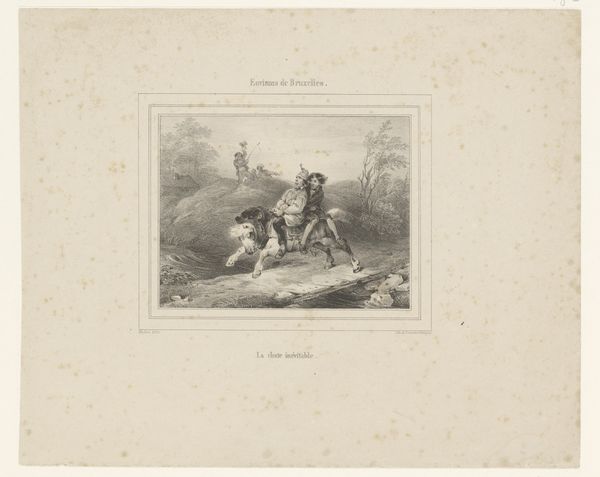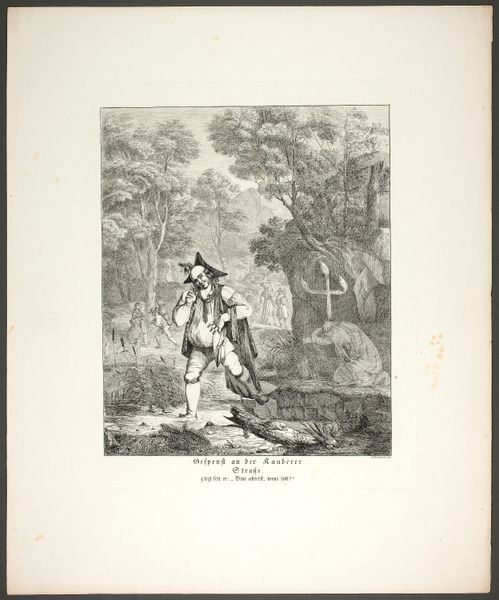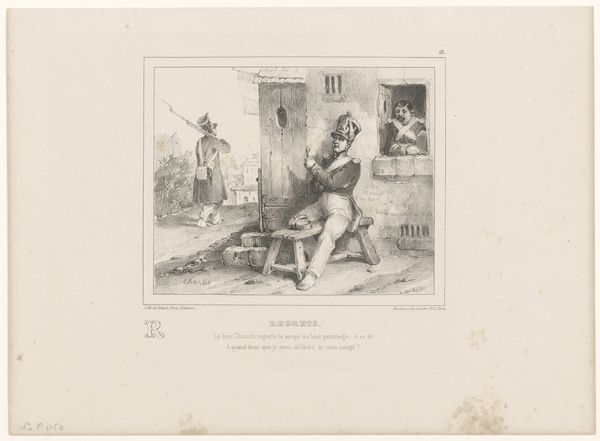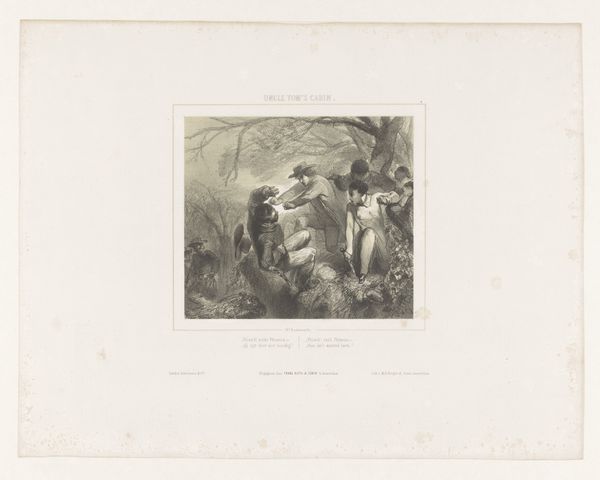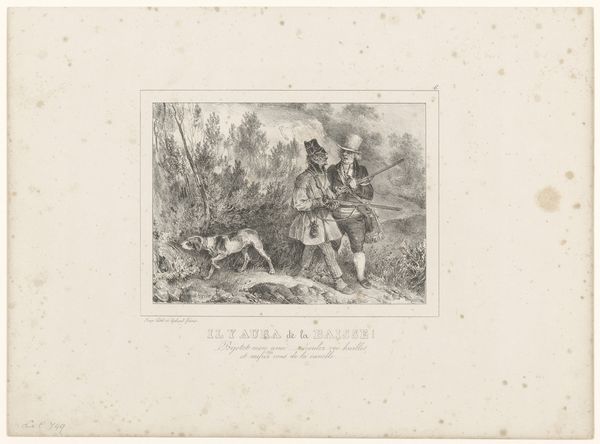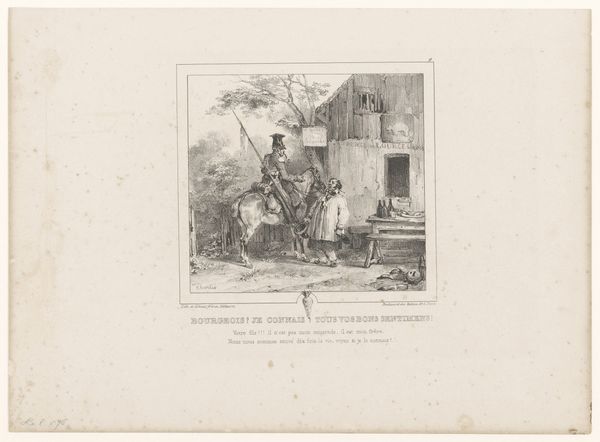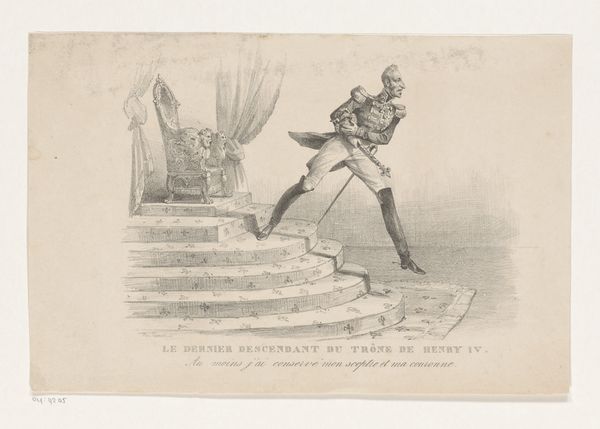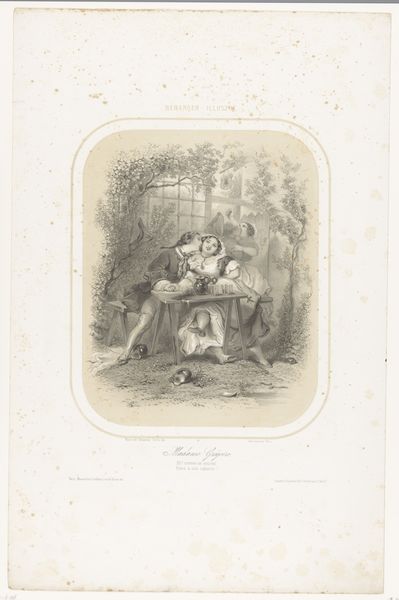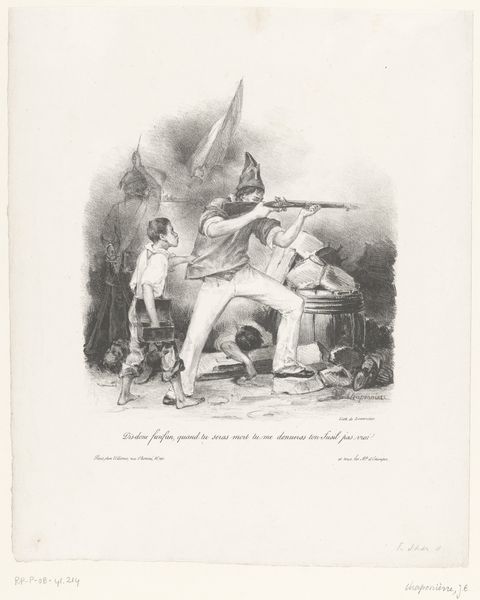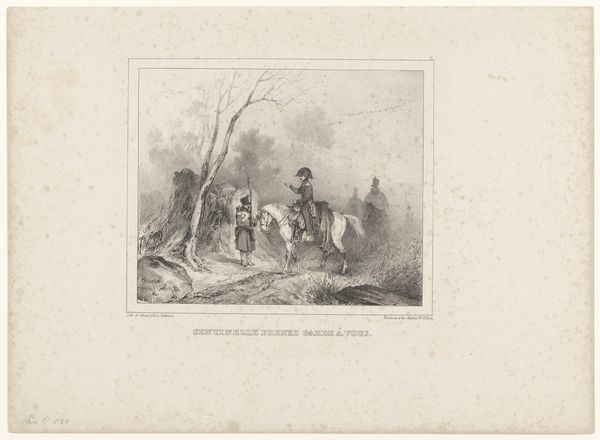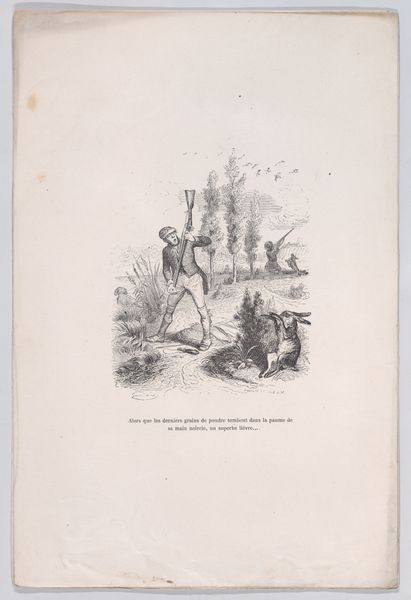
print, engraving
#
pencil drawn
#
light pencil work
#
ink paper printed
# print
#
caricature
#
pencil sketch
#
old engraving style
#
landscape
#
figuration
#
line
#
pencil work
#
genre-painting
#
history-painting
#
engraving
Dimensions: height 247 mm, width 338 mm
Copyright: Rijks Museum: Open Domain
Editor: This is "Dief wordt betrapt door twee gendarmes te paard," or "Thief caught by two mounted gendarmes" by Nicolas Toussaint Charlet, from 1836. It’s a print, currently housed in the Rijksmuseum. It has quite a comedic feel. What kind of story do you think this image is trying to tell? Curator: Well, prints like this were often vehicles for social commentary. Charlet, being a figure during a time of considerable political upheaval in France, likely used this image to critique authority. Note the figure's exaggerated gesture and attire. What does it tell you about the intended audience's perspective on law enforcement at the time? Editor: So, you’re saying the humor is a way to make a point about how people viewed those in power? Was there a common sentiment that Charlet was playing into? Curator: Precisely. Prints circulated widely, becoming accessible forms of visual critique. Consider the timing: 1836. France had experienced the Revolution and was under the July Monarchy. This government faced popular unrest, fueled by economic hardship and suppressed republican ideals. The “thief” – could this be a symbol for the common person struggling for survival or even the artist railing against the King, watched over by political powers, trying to suppress the ideals from rioting again? What does the relatively crude style of the print communicate about its intended reach? Editor: That's interesting – it’s not just about catching a thief but maybe about catching the revolutionary spirit of the people. The sketch style feels less formal, perhaps appealing to a wider audience. I guess it shows how art can reflect societal tensions. Curator: Indeed. Understanding the socio-political climate reveals a much deeper meaning than just a simple depiction of a crime. This gives you a glimpse into a different period in French history. Editor: Thanks, seeing this artwork in the light of its era gave it another layer. Curator: Absolutely. That intersection of art and its public role is crucial in understanding visual imagery.
Comments
No comments
Be the first to comment and join the conversation on the ultimate creative platform.

